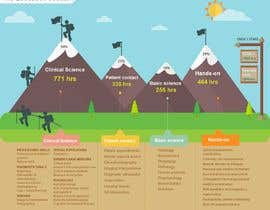Reveal The Secrets Behind Neck Pain And How Comprehending Cervical Back Anatomy Can Aid You Locate Alleviation
Reveal The Secrets Behind Neck Pain And How Comprehending Cervical Back Anatomy Can Aid You Locate Alleviation
Blog Article
Material Author-Mathiasen Desai
As you rest there, maybe feeling a stab of discomfort in your neck, have you ever before thought the intricate structures that compose your cervical back? Understanding exactly how the vertebrae, discs, and nerves engage in this region can shed light on why neck pain can be so persistent and incapacitating. By exploring sore lower back of cervical spine anatomy and its effects for neck pain, you may discover insights that can aid you much better handle or even protect against those nagging pains and rigidity.
Relevance of Cervical Back Composition
Understanding the relevance of cervical back anatomy is essential in comprehending the intricacies of neck pain. The cervical spine, made up of 7 vertebrae, plays an essential function in supporting the head's weight and promoting movement. austin texas functional medicine houses the spinal cord, which sends messages in between the brain et cetera of the body. Additionally, the cervical back shields these fragile nerves and gives architectural security to the neck area.
In addition, the cervical spinal column allows for a wide range of activity, enabling you to transform your head, turn it sidewards, and nod backwards and forwards. Each vertebra has certain features and features that add to the overall flexibility and security of the neck. Understanding the composition of the cervical back can help you realize how injuries or degenerative conditions in this region can result in neck discomfort and related symptoms.
Parts of the Cervical Spine
When discovering the elements of the cervical spine, it becomes apparent that its structure consists of 7 vertebrae, classified C1 to C7, piled on top of each other. These vertebrae are important as they provide assistance to the head and enable a large range of motion in the neck.
The topmost vertebra, C1, additionally referred to as the atlas, supports the skull and enables the nodding movement of the head. Straight underneath C1 is the C2 vertebra, referred to as the axis, which enables the turning of the head back and forth.
Relocating down the cervical back, each vertebra plays an important role in preserving the spinal column's versatility and stability. Between each vertebra are intervertebral discs that work as cushions, taking in shock and stopping the vertebrae from massaging versus each other.
Understanding the parts of the cervical spine is essential in understanding exactly how the spinal column functions and its prospective effect on neck discomfort.
Relationship In Between Back and Neck Pain
The connection between the back and neck pain is an essential aspect of comprehending musculoskeletal pain. Your back, specifically the cervical region, plays a substantial duty in supporting your head and permitting various motions. When there's a problem in the back, such as a herniated disc or misalignment, it can directly impact the surrounding cells and nerves, leading to neck discomfort. Poor stance, injuries, and degenerative conditions can all contribute to spine-related neck pain.
It's vital to recognize that the spinal column and neck function as a cohesive unit. Any kind of irregularities or inequalities in the spinal column can cause strain on the neck muscle mass and tendons, causing pain and tightness.
Final thought
Since you have a basic understanding of cervical spinal column makeup and its connection to neck discomfort, you can much better appreciate the intricacies of your own neck pain. Keep in mind, the wellness of your cervical spine plays a vital duty in supporting your head and promoting activity, so it is very important to deal with it with proper posture, workout, and regular check-ups with a health care expert. Remain educated and aggressive about your back health to stop and manage neck discomfort properly.
